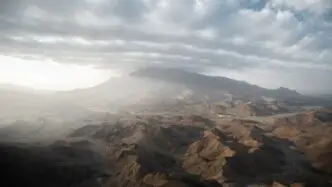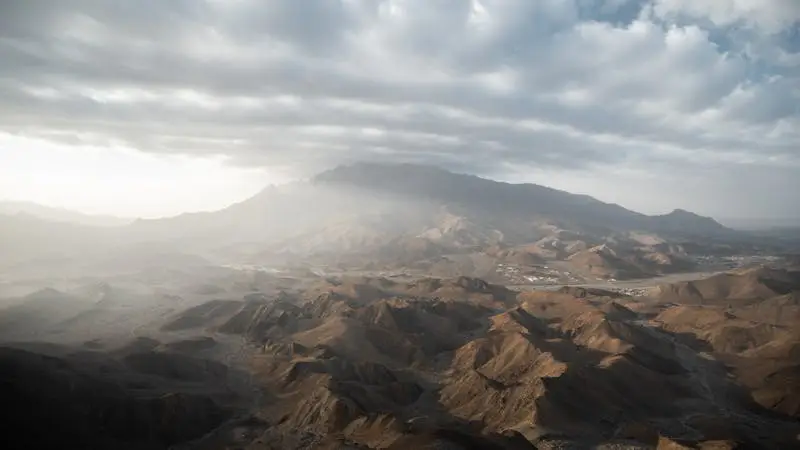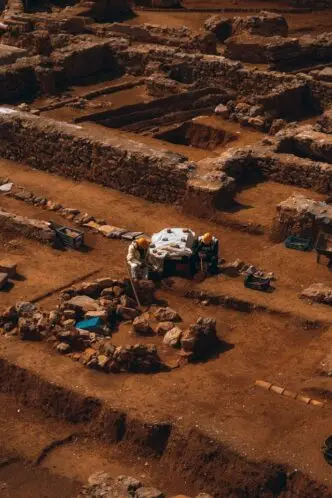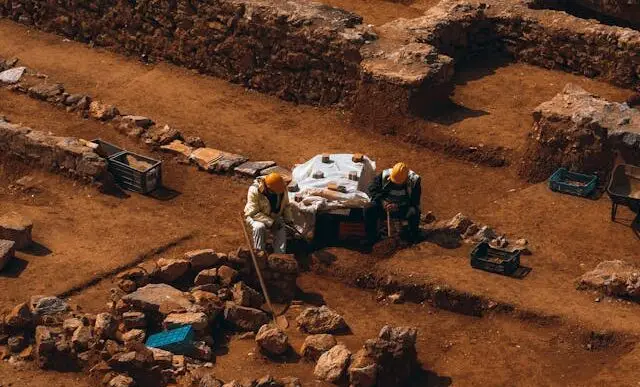Ancient Melodies Unearthed: Rare 4,000-Year-Old Musical Instrument Discovered in Oman
The quiet town of Dahwa, Oman, now resonates with the echoes of an ancient past, as archaeologists have unearthed two unusual discs that are believed to be a rare 4,000-year-old musical instrument. This significant finding was disclosed in a study published recently, shedding new light on the region’s rich cultural history and the evolution of music throughout human civilization.
The discovery, made by an international team of researchers, was found during an excavation process in Dahwa. The discs, crafted from a mysterious, yet-to-be-identified material, exhibit unique properties and are believed to have been used by the ancients to produce music. The artefacts are providing archaeologists with a rare glimpse into the world of ancient Omani artistry and creativity.
Unveiling the Musical Mystery
Upon closer inspection, researchers discovered that the discs were meticulously crafted with intricate designs. The team believes that these designs were not merely decorative but had a functional purpose relating to the instrument’s sound production. Each disc has a different pattern, suggesting that they might have been used to create distinct musical notes.
Archaeologists, working closely with musicologists and historians, are now trying to decode the mystery of these discs, hoping to recreate the music that was played thousands of years ago. The study of ancient music, often referred to as music archaeology, is an emerging field that seeks to understand the role of music in ancient societies and its importance in cultural expression.
The Importance of the Discovery
The discovery of this ancient instrument in Dahwa presents a significant breakthrough in the understanding of the region’s history, particularly the Bronze Age. This period, which lasted from approximately 3300 B.C. to 1200 B.C., saw significant advances in technology, art, and culture. However, evidence of musical instruments from this era remains scarce, making this particular discovery even more exciting for the archaeological community.
The presence of such an advanced musical instrument suggests that the people of Dahwa, and perhaps the wider region, had a sophisticated understanding of music, craftsmanship, and acoustics. This challenges previous beliefs about the cultural development of the area, suggesting an unexpected depth of artistic and creative expression.
Future Implications and Research
The discovery of the ancient musical instrument in Dahwa is just the beginning. The international team of researchers plans to continue its excavation in the region, hoping to find more evidence of ancient Omani culture and musical history. They also intend to explore other parts of the Middle East and North Africa, where similar artefacts might be found.
With the help of modern technology, the team also plans to recreate the sounds and melodies that this ancient instrument might have produced, providing a unique opportunity to experience the music of our ancestors. This groundbreaking project could revolutionize our understanding of ancient music and its role in human society.
This discovery not only enriches our knowledge of ancient Omani culture but also opens up new avenues for research in the field of music archaeology. It brings new excitement to the study of ancient civilizations and offers a fresh perspective on the evolution of music and cultural expression over millennia.















